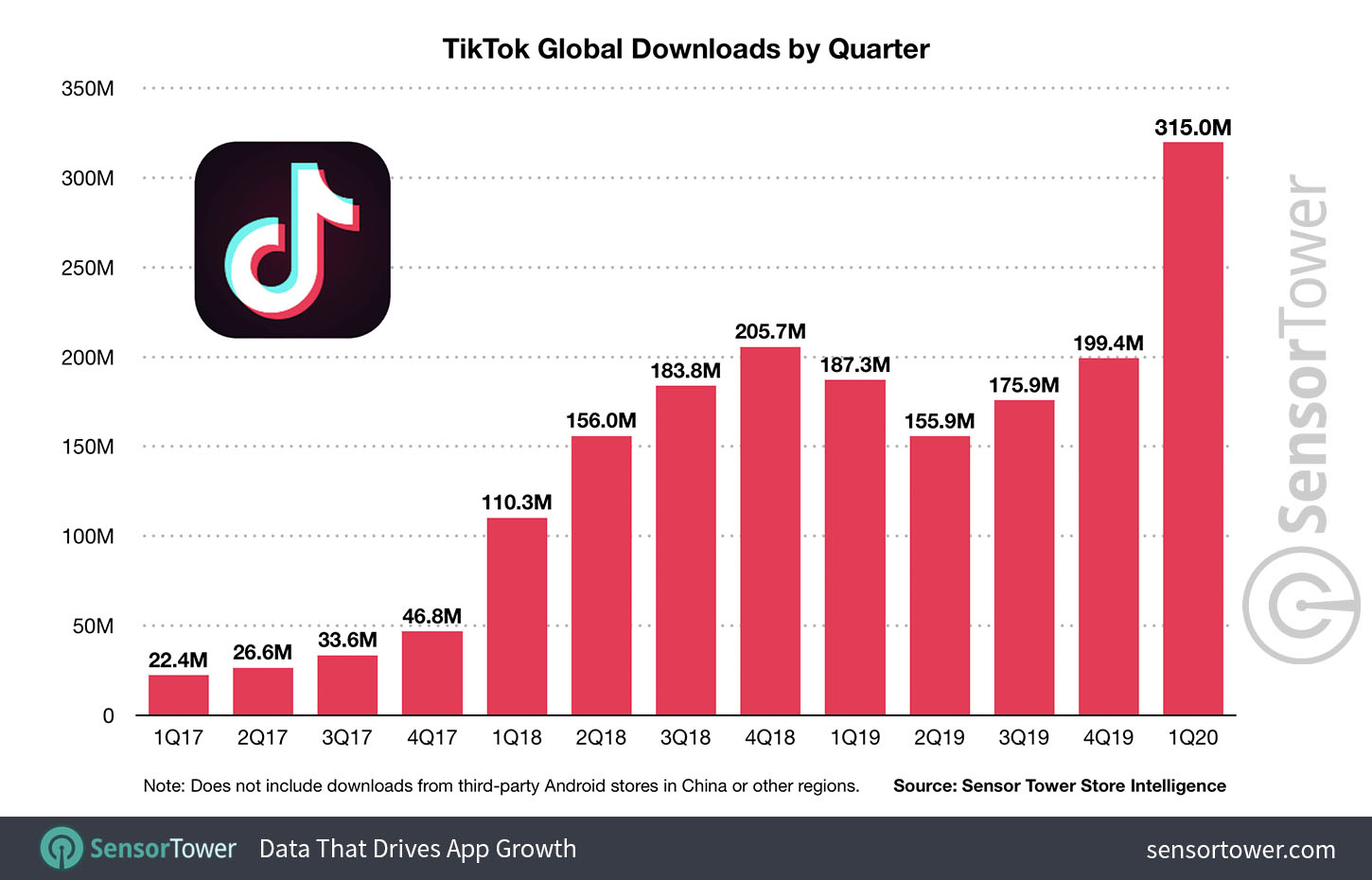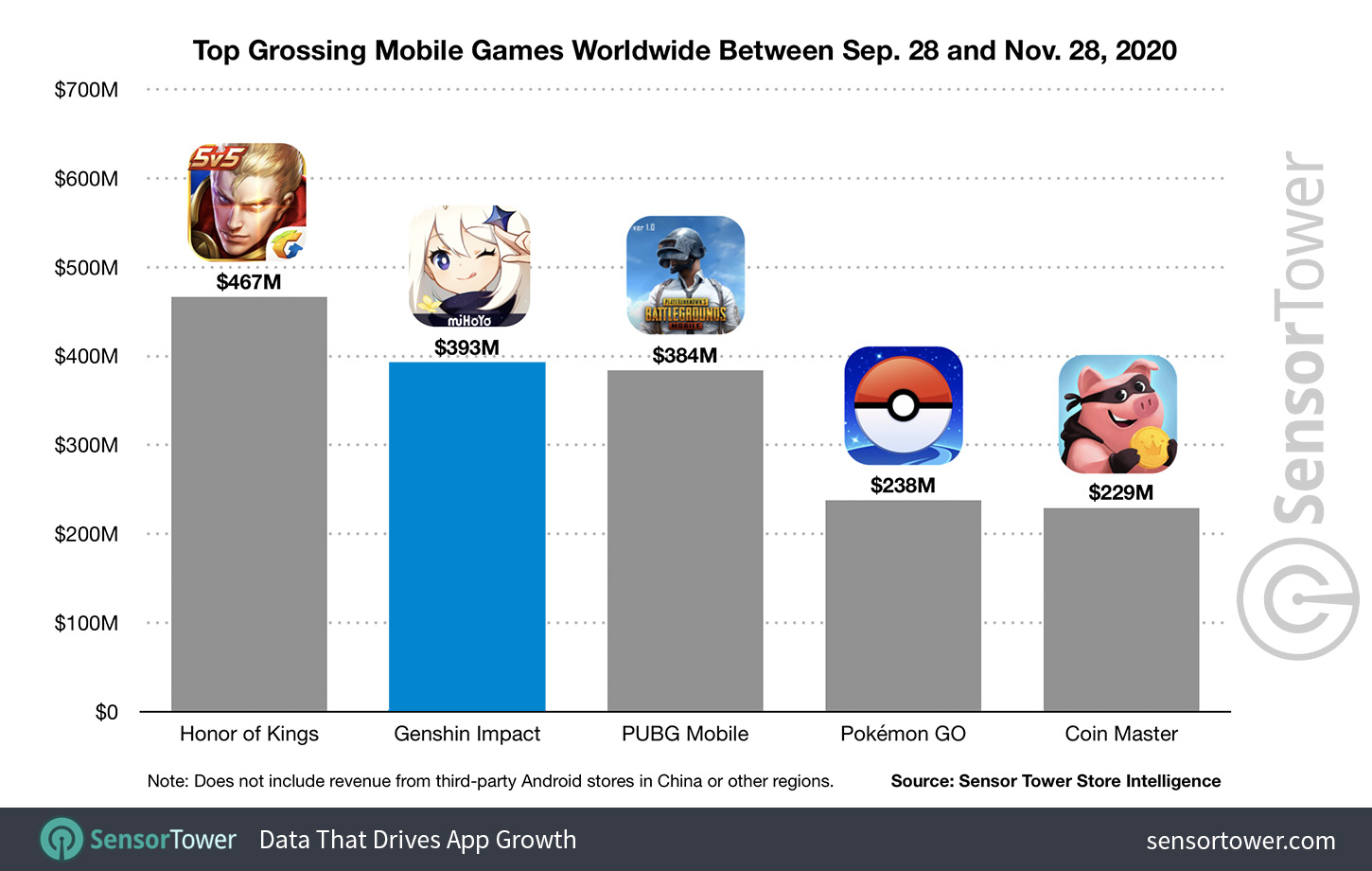Predictions for the Digital Economy in 2026 Report is Live!
Mobile App Insights · Stephanie Chan · December 2020
2020 Year In Review: 10 Mobile Milestones
Take a look back at insights based on Sensor Tower data from throughout 2020.

From the ascendency of conferencing apps to mobile games hitting new records in consumer spending, Sensor Tower Store Intelligence data shows that the mobile market has reflected many of the shifts in lifestyle and consumer interest throughout an unprecedented year. Ahead of our upcoming market recap analysis, we're taking a look back at some of these major milestones from 2020 across both mobile games and apps.
1. Consumer Spending Passed $100 Billion
Worldwide spending across the App Store and Google Play has climbed each year, but it was supercharged in 2020 as many users turned to mobile games and video-on-demand apps for entertainment, and video conferencing for work and school.
Year-to-date, consumer spending has now reached approximately $106 billion globally between January 1 and December 17. This figure represents 30 percent growth year-over-year when compared to the same period in 2019. It's also 24 percent greater than total consumer spending for all of last year, which reached approximately $85.2 billion.

About 65 percent of consumer spending so far this year has occurred on the App Store, which has generated more than $69 billion. This is about 30 percent Y/Y growth from the same period last year, when the App Store saw approximately $53 billion in spending. Google Play has generated nearly $37 billion in revenue, a figure that represents 30 percent Y/Y growth from $28.4 billion in the previous year.
Mobile games accounted for 71.7 percent of spending year-to-date, reaching $76 billion. Non-game apps collectively reached $30 billion, led by Entertainment.
2. TikTok's Record-Breaking Year
It's been an eventful year for TikTok, which has reached nearly 2.6 billion installs globally to date, including Douyin on iOS in China. In Q1 2020, it set a new record with 315 million installs globally, the most any app has seen in a single quarter. From January 1 to December 17, the app has reached nearly 961 million installs globally this year.

From January 1 to December 17, the app has generated approximately $1.2 billion in user spending, up 627 percent from $165.1 million during the same period in 2019. Bytedance is continuing to innovate on in-app commerce as well, partnering with big brands such as Walmart. The next year will likely herald even more brand partnerships as TikTok continues to race against competitors such as Byte and social media giants Instagram and YouTube.
3. Buy Now, Pay Later Apps Continue to Grow
Earlier in 2020, the top BNPL apps in the U.S. saw their installs climb each month starting in June—and this trend has only continued. The top four apps of this kind in the United States, including Klarna, Affirm, Afterpay, and QuadPay, have set and broken new monthly download records in October and again in November.
Last month, the apps collectively saw 2.6 million installs from across the U.S. App Store and Google Play, up 136 percent Y/Y from 1.1 million in November 2019. From January 1 to December 17, the four top BNPL apps have reached 14.7 million installs in the U.S., up 137 percent Y/Y from 6.2 million between January 1 and December 17, 2019. These apps' monthly active users have also continued to steadily climb, experiencing 162 percent Y/Y growth last month compared to November 2019.

Sensor Tower's latest report on mobile retail trends revealed that e-commerce has seen a huge acceleration and shift due to the COVID-19 pandemic. The increase in popularity of BNPL apps will likely continue into 2021.
4. Business Boom on Mobile
We revealed in our Q2 2020 Data Digest that the Business category has seen unprecedented installs this year, and, since the second quarter, first-time downloads have remained high.
From January to November, Business apps saw approximately 3.6 billion installs globally from across the App Store and Google Play. This figure is more than double the 1.5 billion installs the category saw in the same period in 2019, representing 140 percent Y/Y growth.

The top three apps in the category are all centered on facilitating communication between consumers. Zoom was the top downloaded app, reaching over 667 million installs between January 1 and December 17 globally. It was followed by Google Meet and Microsoft Teams, which have seen 324.5 million and 195.5 million installs, respectively. These tools have found widespread use this year, not only for remote work but also for distance learning and also socialization—a trend that may very well continue into the next year.
5. Small Screen Battles Loom Large
As consumers around the world turned to their phones and tablets for entertainment, various streaming services have vied for their attention. 2020 saw the launch of bespoke services such as Quibi as well as network-backed platforms such as Peacock and HBO Max.
Already established platforms have turned their eyes to appealing to wider audiences by launching in new markets. The Disney+ mobile app saw the most downloads in a month ever in November when it hit more than 25 million installs globally, largely due to its rollout to Latin American markets. Netflix offered free trials during its StreamFest event in India, which led to a 200 percent W/W increase in its installs there.
With more services on the way in 2021 such as Paramount+ and Discovery+, the SVOD space will see even more fierce competition.

6. A Record Five Mobile Games Generated More Than $1 Billion in 2020
Player spending has risen across the mobile games market in 2020 and as a result of that the world's top revenue generating titles have also experienced significant growth. This year has already seen five titles surpass $1 billion, with PUBG Mobile from Tencent leading the way at $2.6 billion, up 64.3 percent from 2019. Another Tencent game, Honor of Kings, has accumulated close to $2.5 billion in player spending, up 42.8 percent from the year prior.

The titles were followed by Pokémon GO from Niantic at No. 3, Coin Master from Moon Active at No. 4, and Roblox at No. 5. The quintet could yet be joined by a sixth title, with Monster Strike from Mixi having accumulated $958 million so far this year. 2020's tally of five games generating $1 billion-plus in a single year is a record, with 2019 and 2018 both seeing three titles achieving the milestone.
7. Roblox Passes $2 Billion in Consumer Spending
After years of flying under the radar, Roblox from Roblox Corporation is now obtaining global recognition as one of the industry's leading MMOs. Sensor Tower estimates show that the title surpassed $2 billion in player spending in October 2020. It took seven months to generate $500 million and cross the $1.5 billion mark in May 2020, and just five months after that to accumulate a further $500 million and surpass $2 billion. Lifetime player spending for the game currently stands at $2.2 billion.

So far in 2020, Roblox has generated close to $1.1 billion, an almost two-times increase from 2019 revenue. Player spending surged as lockdowns were enforced across the globe during the COVID-19 pandemic. Revenue hit a peak of $112.8 million in May 2020, a three-times increase year-over-year, and up 72.3 percent from January. With sales remaining strong, Roblox Corporation is well-positioned for its IPO, which is now expected in 2021.
8. Genshin Impact is the Biggest RPG Launch To Date
Genshin Impact from miHoYo was an instant hit when it officially launched on September 28. The RPG generated approximately $60 million worldwide from the App Store and Google Play in its first week, and by the end of its first month had amassed nearly $250 million. After two months, it had picked up close to $400 million and was averaging more than $6 million a day. The title is currently closing in on $500 million less than three months after its release.

Genshin Impact is smashing records, becoming one of the biggest mobile game launches of all time. Utilizing Sensor Tower Game Taxonomy data, we can see that it was the biggest mobile RPG launch ever in the United States, picking up $45 million during its first 30 days, putting it above the likes of Fire Emblem Heroes from Nintendo and The Seven Deadly Sins from Netmarble.
The title is another example of the increasing influence of China's top publishers on the global mobile games market. Not just a success at home, 69.5 percent of player spending has been generated outside of China, making it a true international success.
9. PUBG Passes $4 Billion Grossed—$2.6 Billion This Year Alone
Currently 2020's top-grossing mobile game, PUBG Mobile has had astonishing success this year. It's already picked up $2.6 billion, bringing lifetime player spending to $4.3 billion. Monetized successfully through its battle pass system—known as the Royale Pass—the title is easily one of the most successful mobile games of all time.

Its best month ever came at the height of initial lockdowns during the COVID-19 pandemic, with revenue racking up $300 million in March alone. While spending has since dipped, November still saw the game generate $174.2 million, ranking as the No. 2 title by global revenue for the month, behind Honor of Kings in the top spot.
As with Genshin Impact, PUBG Mobile's success is a key example of China's influence on the global market, with 45.7 percent of player spending coming from outside of China.
10. Among Us Picks Up More Than 275 Million Downloads
Among Us from InnerSloth has been one of 2020's biggest breakout hits, a feat made all the more impressive by the fact that it was first launched in 2018 to little fanfare. The title began to garner attention through the influencer sphere across YouTube and Twitch, with increasingly more creators making video content and streaming it.

In August, downloads spiked 661 percent month-over-month to 18.4 million, while downloads grew a further 351 percent M/M to approximately 83 million in September. To date, Among Us has accumulated 276.8 million lifetime downloads, with 94.7 percent of downloads coming in 2020. Among Us is currently the No. 2 most downloaded mobile game of 2020, just behind Garena Free Fire from Garena Games at No. 1.
Accelerated Growth and Changing User Needs
As platform owners such as Apple move to change their revenue-sharing model, developers grapple with shifting consumer needs, and categories continue to grow, the mobile landscape will continue to evolve over the next year. We will be taking a more in-depth look at how the mobile market has changed over the course of 2020 in our market recap post coming in early January.
Craig Chapple, Sensor Tower's Mobile Insights Analyst, EMEA, contributed gaming insights to this article.
